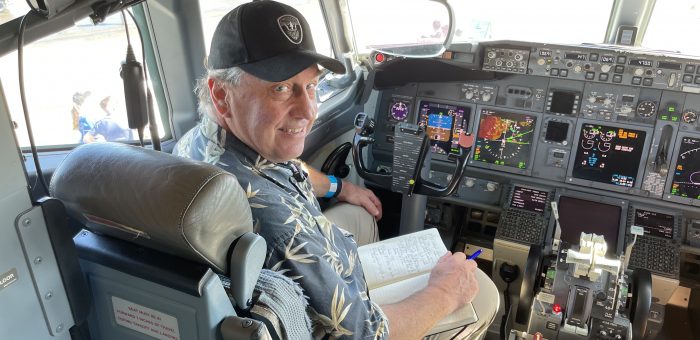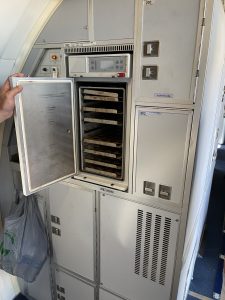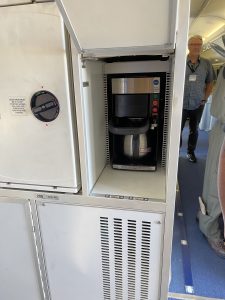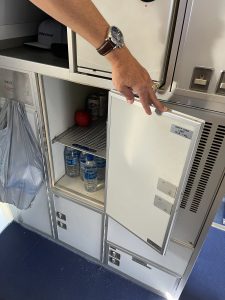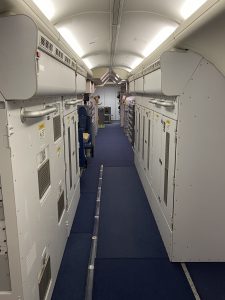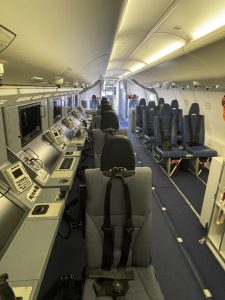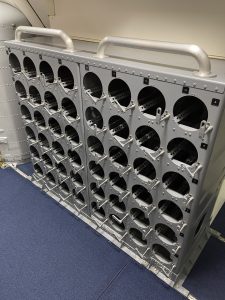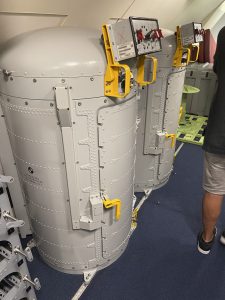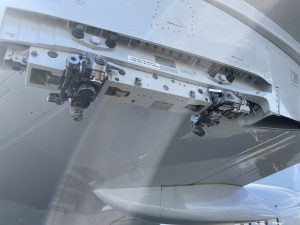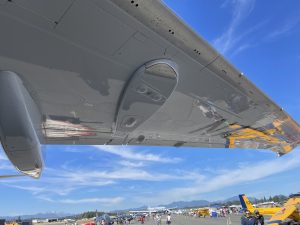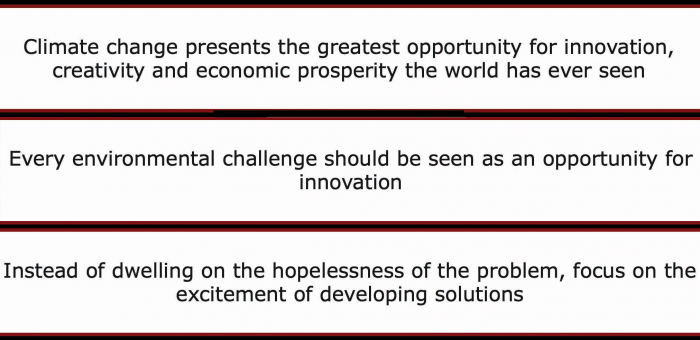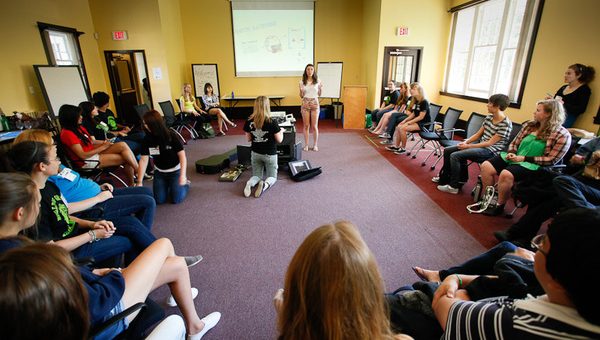Issues & Community Blog - Andrew Weaver: A Climate for Hope - Page 5
Sustainable Aviation Fuel — Opportunities for Innovation in Aviation Sector
With the summer holiday season coming to an end, and after hearing no end of COVID-related horror stories (delays, cancelled flights, staff shortages, passport issues) from friends and family who decided to travel by air to destinations afar for the first time in several years, I thought I would spend some time exploring climate solutions in the aviation sector.
the summer holiday season coming to an end, and after hearing no end of COVID-related horror stories (delays, cancelled flights, staff shortages, passport issues) from friends and family who decided to travel by air to destinations afar for the first time in several years, I thought I would spend some time exploring climate solutions in the aviation sector.
As I noted in my recent presentation to the BC Aviation Council May Conference 2022, Transportation in the aviation sector affects our climate through two main ways. The first, and most obvious, is via the emissions of greenhouse gases associated with the combustion of jet fuel. In 2020, international (not including domestic) aviation was the 10th biggest total emitter of carbon (171.15 Megatonnes) world wide (behind China, USA, India, Russia, Japan, International Shipping, Germany, Iran and South Korea). In total, aviation accounts for about 2.5% of global emissions of carbon dioxide.
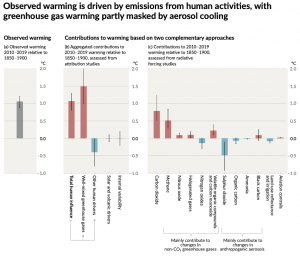 The second main way that aviation affects the climate system is through the creation of contrails. Contrails occur when moisture in jet exhaust condenses in the high altitude cold ambient environment to create lines of thin cirrus clouds, comprising ice crystals, whose net effect is to warm the Earth further. While innovation in flight path planning is ongoing in an effort to reduce contrail formation, off the shelf solutions to replace jet fuel appeared elusive, until recently.
The second main way that aviation affects the climate system is through the creation of contrails. Contrails occur when moisture in jet exhaust condenses in the high altitude cold ambient environment to create lines of thin cirrus clouds, comprising ice crystals, whose net effect is to warm the Earth further. While innovation in flight path planning is ongoing in an effort to reduce contrail formation, off the shelf solutions to replace jet fuel appeared elusive, until recently.
On August 6 and 7, 2022 I attended the Abbotsford Air Show to learn about innovation in the aviation industry and the use of sustainable aviation fuel (SAF), sometimes known as biojet fuel. I was quite excited by what I discovered as it appears that Canada is uniquely positioned to be an international leader in this area.
It was evident to me that the aviation industry is deeply concerned about their greenhouse gas emissions and that they are investing heavily in carbon-neutral technology pathways. While we can expect to see the increasing use of electric engines, hydrogen fuel cell technology and even potentially hydrogen combustion from onboard cryogenic storage tanks, these will likely only be available for commuter, regional and short haul flights (<120 minute with < 150 passengers) over the next decade or two. Unfortunately, such short-haul flights only account for about 27% of global carbon dioxide emissions from the aviation sector whereas medium and long haul flights account for the remaining 73%. And so, if we want to reduce emissions from the aviation sector over the next few decades, widespread adoption of SAF made from renewable organic waste will be required.
A number of companies, including Neste, Lanzajet and World Energy have either been recently established or are already heavily invested in producing SAF using renewable ethanol from waste (such as cooking oil) as an initial focus. Of course, establishing sustainable supply chains for organic waste that don’t involve food stocks (e.g. Canola) or limited supplies of cooking oil will be needed if SAF is to scale up globally. Other companies (e.g., Licella, Ensyn, Steeper Energy etc.) are also heavily invested in exploring the potential of non-food source related waste (e.g. from forestry, municipal waste, sewage, waste plastic etc.) as feed stock for renewable fuels.
 And herein comes the potential opportunity for British Columbia and Canada.
And herein comes the potential opportunity for British Columbia and Canada.
First, the University of British Columbia’s Department of Wood Science is already considered an international leader in biofuel research and hosts the British Columbia Sustainable Marine, Aviation, Rail and Trucking (BC-SMART) consortium. British Columbia and Canada are well positioned to capitalize on investments in research and innovation in this sector.
Second, British Columbia has no shortage of wood or other organic waste that could potentially sustain domestic supply chains for biofuel production.
Third, wood waste, such as slash piles left behind after logging activities have concluded, are often either burnt in situ, left to decompose, or eventually act as a fuel source for wild fires. Removing this waste and converting it to biofuel has significant environmental co-benefits.
Fourth, wood waste is distributed throughout British Columbia, and in particular rural BC. Capitalizing on the opportunities afforded by the harvesting of wood (or other organic) waste would provide distributed economic opportunities for indigenous and non-indigenous communities across our province.
In 2018 I wrote extensively about the challenges and opportunities associated with greenhouse gas reductions in British Columbia. In particular, I noted that embedded in the confidence and supply agreement that I signed with the BC NDP in 2017 was the following commitments:
Climate Action
-
- Implement an increase of the carbon tax by $5 per tonne per year, beginning April 1, 2018 and expand the tax to fugitive emissions and to slash-pile burning;
- Deliver rebate cheques to ensure a majority of British Columbians are better off financially than under the current carbon tax formula;
- Implement a climate action strategy to meet our targets.
While British Columbia is on track to dramatically reduce its greenhouse gas emissions in the years ahead associated with our Clean BC climate plan, one of the policy commitments we didn’t deliver on was an expansion of the carbon pricing to slash pile burning. This is important since if a price is attached to slash emissions, an incentive is created to avoid this potential liability and so forestry (and other) companies would be given an economic reason to extract slash from forest operations. Such a price could be set directly (on emissions) or indirectly (via regulation) as was done for fugitive emissions in the oil and gas sector.
So in summary, it strikes me that the sustainable fuel sector for long haul transportation represents an incredible opportunity for innovation that British Columbia and Canada can capitalize on. The economic, environmental and social benefits of investments in this area appear to be far-reaching.
Coming back to the Abbotsford Air Show, one of the planes that I toured was the Boeing P-8A (pictured above). The P-8A is a military plane designed for long-range reconnaissance, surveillance, and submarine detection missions. And here is why this is important.
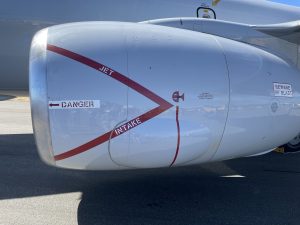 Canada is in the final stages of a procurement process:
Canada is in the final stages of a procurement process:
“To equip the Canadian Armed Forces with a long-range manned Command, Control, Communications and Computers (C4) and Intelligence, Surveillance and Reconnaissance (ISR) and Anti-Submarine Warfare (ASW) aircraft with extended capabilities to replace the CP-140 Aurora.”
The Boeing P-8A represents a solution that may meet the needs of this procurement. Why this is interesting is that the P-8A is already capable of operating on 50% SAF and Boeing has committed to meet a 100% SAF capability by 2030.
Touring the P-8A felt like I was exploring a repurposed Boeing 737 for good reason! The P-8A has a Boeing 737-800 body, 737-900 wings, a 737 cockpit and a 737 engine with a substantive increase in available electrical power. Fully 86% of the commercial components within the P-8A are common with Boeing’s 737 series, the world’s most prevalent passenger jetliner.
Figure: Four images taken inside the Boeing P-8A illustrating its galley and washroom similarities with the Boeing 737 passenger jetliner.
While I do not have the expertise to assess the military capabilities of the P-8A, I learned that 156 of them with over 450,000 logged flight hours, are in military use worldwide (in the US, India, UK, Norway, Germany, Australia, New Zealand and South Korea).
Figure: Four images taken inside the Boeing P-8A showing its military workstations and the sonobuoy storage/release systems
Figure: Two images of the underside of the Boeing P-8A wing indicating wing pylons that allow for the attachment of up to 3,000 lb weapons.
What excited me most about my tour of the Boeing P-8A at the Abbotsford Airshow is that I came away with a sense of optimism and hope for the future of the aviation industry. Imagine the potential for the Canadian military to show international leadership by investing in a sustainable replacement for its CP-140 Aurora fleet that would create a local market for sustainable air fuels produced from locally-sourced slash and other organic waste. While scaling up the use of SAF in the global aviation industry remains a challenge, Canada can do its part positioning itself as a early adopter and international leader in the area.
Moving on from Provincial Politics: A Climate for Hope
To bring closure to my 7 1/2 years as an MLA for Oak Bay-Gordon Head and 5 years as leader of the BC Green Party I felt it was important to add this video to my archived MLA website. Moving forward, I plan to continue my work on climate solutions on the local, provincial, national and international level.
This YouTube video was produced by Robert Alstead, the same person who created the documentary “Running on Climate”. That documentary provided an inside look into the 2013 election campaign set within a greater climate change narrative.
This YouTube video might be of interest to some as it gives insight as to why I got into and out of politics. The book that I refer to in this video has the working title: “A Climate for Hope” and not “A Vehicle for Change”.
Thank you to the Residents of Oak Bay-Gordon Head
With the announcement yesterday that the province is heading into a general election on October 24, my term as the MLA for Oak Bay Gordon Head has come to an end. This will be my last post on my MLA website.
I would like to thank you, the constituents of this fabulous riding, for extending me the great honour of serving you these last 7 1/2 years. It has been a very rewarding experience for me and I have been so very fortunate to have worked with outstanding constituency staff over this period. If you have contacted my constituency office, you too will have had first hand experience working with these exceptional individuals.
Thank you Judy Fainstein, Perry Fainstein, Devon deLarge, Allie deLarge, Rory Hills, Sarah Miller, Teresa Hartrick and Huxley Johnson.
Over the years I also had the privilege of working with first rate legislative staff. I was first elected in May 2013 and our small but mighty legislative team immediately immersed itself into building a BC Green presence in the BC Legislature. Thank you Taylor Hartrick, Evan Pivnick, Matt Wright, Sarah Miller, Claire Hume, Aldous Sperl and Judy Fainstein for your support during my first term: 2013 – 2017.
With the 2017 election delivering a minority BC NDP government and the BC Greens holding the balance of power, our legislative team grew. I remain grateful to the hard work of Liz Lilly, Macon McGinley, Judy Rendek, Stephanie Siddon and the legislative interns and volunteers who supported our office over the years.
Of course, I would never have been elected were it not for the hard work of the literally hundreds of volunteers who helped me in the 2013 and 2017 election campaigns. I ran on a promise to bring climate policy back to the forefront in BC. And with the establishment of CleanBC, I feel my work is done.
Finally, thank you to the candidates who have stepped forward to seek your vote to represent you as the MLA for Oak Bay Gordon Head in the upcoming election. From the quality of the candidates stepping forward, it is clear to me that our riding will be in good hands moving forward, regardless who wins the upcoming race.
Thank you again.
Andrew
Celebrating youth in our community – Olivia Friesen
This is the twenty-seventh installment in our series on exceptional youth where we celebrate the outstanding achievements of youth in the Oak Bay-Gordon Head riding. As we commence this chapter in our series we have chosen to celebrate the accomplishments of two sisters in Oak Bay, Olivia and Anna Friesen. These inspirational young adults are enriching our lives with their passion and commitment to the betterment of society.
Olivia Friesen
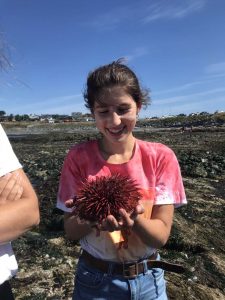 Although many younger siblings would feel overwhelmed by the pressure of having an older sister as accomplished as Anna Friesen, Olivia has elected to view her older sister as a role model while still managing to distinguish herself as a different but no less remarkable young individual.
Although many younger siblings would feel overwhelmed by the pressure of having an older sister as accomplished as Anna Friesen, Olivia has elected to view her older sister as a role model while still managing to distinguish herself as a different but no less remarkable young individual.
In grade nine Olivia obtained marks of 100% in Social Studies and Science, 99% in math, and 96% in English. This past year, she followed up her incredible academic performance in her freshman year with an overall average in the upper 90s.
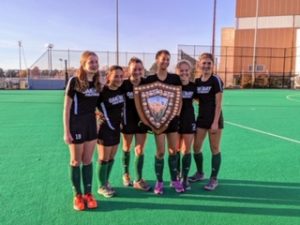 Like her older sister, Olivia is a multidimensional athlete who has found success in nearly every sport she has decided to attempt. Last season, Olivia played on Oak Bay’s elite U16 Vancouver Island Premiere League team (which won their division) and was an important part of the high school junior girls’ team. She is also an excellent field hockey player who is a valuable member of school’s team and has been chosen to participate in the Rising Stars Elite Training Program. To top it off, Olivia runs the 100, 200, and 400 metre dash for the school’s track and field team and competes in long jump, triple jump, and pole vault.
Like her older sister, Olivia is a multidimensional athlete who has found success in nearly every sport she has decided to attempt. Last season, Olivia played on Oak Bay’s elite U16 Vancouver Island Premiere League team (which won their division) and was an important part of the high school junior girls’ team. She is also an excellent field hockey player who is a valuable member of school’s team and has been chosen to participate in the Rising Stars Elite Training Program. To top it off, Olivia runs the 100, 200, and 400 metre dash for the school’s track and field team and competes in long jump, triple jump, and pole vault.
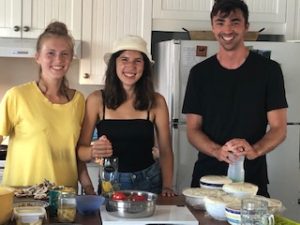 When she was in grade five, Olivia began playing the cello and has evolved to become an integral part of the Oak Bay High School Orchestra. In grade 9, her hard work and dedication was acknowledged by the Orchestra who decided to give her the Most Improved Strings Player Award. Additionally, while at Monterey Middle School, Olivia decided to take up playing the trumpet and is a now a member of the Oak Bay High School Concert Band.
When she was in grade five, Olivia began playing the cello and has evolved to become an integral part of the Oak Bay High School Orchestra. In grade 9, her hard work and dedication was acknowledged by the Orchestra who decided to give her the Most Improved Strings Player Award. Additionally, while at Monterey Middle School, Olivia decided to take up playing the trumpet and is a now a member of the Oak Bay High School Concert Band.
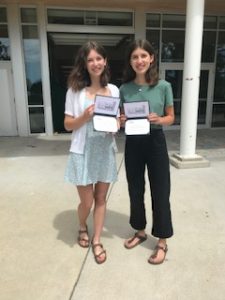 Despite her young age, Olivia has found numerous ways to give back to the local community and is an active member of the school’s environment club. This past year she helped to organize the rubber ducky race, volunteered as a Christmas gift wrapper for the Mustard Seed, and served as a volunteer for the school’s annual Cops for Cancer campaign. In previous years, Olivia has participated in restoration projects at Bowker Creek and Anderson Hill Park. When she was in grade nine, she was one of just six students in her year selected to participate in the Live Different program and would have travelled down to Mexico during spring break to build two houses for disadvantaged families if not for COVID-19.
Despite her young age, Olivia has found numerous ways to give back to the local community and is an active member of the school’s environment club. This past year she helped to organize the rubber ducky race, volunteered as a Christmas gift wrapper for the Mustard Seed, and served as a volunteer for the school’s annual Cops for Cancer campaign. In previous years, Olivia has participated in restoration projects at Bowker Creek and Anderson Hill Park. When she was in grade nine, she was one of just six students in her year selected to participate in the Live Different program and would have travelled down to Mexico during spring break to build two houses for disadvantaged families if not for COVID-19.
As her membership in the school’s environment club would indicate, Olivia is interested in climate change and conservation which she may pursue academically down the road in university. In line with her interests in environmental science, she cites science teacher Derek Schubsole as positive academic influence in her life.
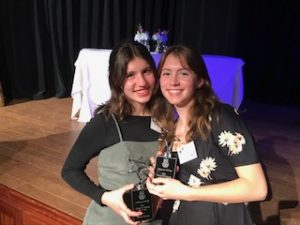 Throughout the COVID-19 pandemic Olivia has done her best to stay positive and keep a daily routine, but like many others, misses the personal interactions that form an important part of her everyday life. She’s looking forward to the start of the new school year after spending the summer working in the Kiwanis Willows Tea room.
Throughout the COVID-19 pandemic Olivia has done her best to stay positive and keep a daily routine, but like many others, misses the personal interactions that form an important part of her everyday life. She’s looking forward to the start of the new school year after spending the summer working in the Kiwanis Willows Tea room.
Given her personal drive and natural talent in so many different areas, we believe that Olivia is destined to continue being a high achiever whose work impacts the lives of numerous others.
Celebrating youth in our community – Anna Friesen
This is the twenty-sixth installment in our series on exceptional youth where we celebrate the outstanding achievements of youth in the Oak Bay-Gordon Head riding. As we commence this chapter in our series we have chosen to celebrate the accomplishments of two sisters in Oak Bay, Anna and Olivia Friesen. These inspirational young adults are enriching our lives with their passion and commitment to the betterment of society.
Anna Friesen
 Normally, my office and I prefer to chat with the youth we’re celebrating in person, but given the circumstances, we elected to conduct our conversation with the two sisters via Zoom. When we spoke to them in early August, they were vacationing at their family cabin in the Okanagan with their parents and family friends – one of whom is Logan Graham a young man we have recognized in the past (link to blog post on Logan to be added here).
Normally, my office and I prefer to chat with the youth we’re celebrating in person, but given the circumstances, we elected to conduct our conversation with the two sisters via Zoom. When we spoke to them in early August, they were vacationing at their family cabin in the Okanagan with their parents and family friends – one of whom is Logan Graham a young man we have recognized in the past (link to blog post on Logan to be added here).
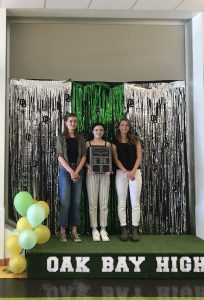 Originally from the Okanagan, Anna moved to Victoria in early childhood and attended Willows Elementary School and Monterey Middle School. Now entering her final year of high school at Oak Bay Secondary, Anna is one of the rare individuals with the natural talent and work ethic required to find success in multiple areas.
Originally from the Okanagan, Anna moved to Victoria in early childhood and attended Willows Elementary School and Monterey Middle School. Now entering her final year of high school at Oak Bay Secondary, Anna is one of the rare individuals with the natural talent and work ethic required to find success in multiple areas.
Throughout high school, Anna has consistently demonstrated that she is one of the top students in her grade. In grade 10, she obtained a remarkable 97% average with marks of 100% in math, social studies, and entrepreneurship. This past year, Anna somehow managed best her outstanding grade 10 performance by increasing her average to 98%. In grade 12 she will be taking a full load of math and science courses, including the calculus-math 12 combo, physics, biology, and chemistry. And she’s looking forward to the start of the new school year after spending the summer working in the Kiwanis Willows Tea room.
 Outside of the classroom, Anna is a gifted athlete who has performed at a high level in soccer, track, and volleyball. Winner of Oak Bay Secondary’s prestigious Female Athlete of the Year Award in 2019 – a trophy won by former Olympians – she was also the track team’s 2018 Rookie of the Year and won Most Outstanding Junior Track Athlete in 2019. And while she is clearly no slouch in the talent department, she is also a natural leader who is highly regarded by her teammates and coaches, evidenced by her role as captain of her Bays United soccer team.
Outside of the classroom, Anna is a gifted athlete who has performed at a high level in soccer, track, and volleyball. Winner of Oak Bay Secondary’s prestigious Female Athlete of the Year Award in 2019 – a trophy won by former Olympians – she was also the track team’s 2018 Rookie of the Year and won Most Outstanding Junior Track Athlete in 2019. And while she is clearly no slouch in the talent department, she is also a natural leader who is highly regarded by her teammates and coaches, evidenced by her role as captain of her Bays United soccer team.
 Although athletics and academics are big parts of Anna’s life, it quickly became apparent in our Zoom conversation with her that she is also passionate about music and fine arts. She is a dedicated member of the Jazz Band in which she plays the tenor saxophone and has taken visual arts and journalism as electives.
Although athletics and academics are big parts of Anna’s life, it quickly became apparent in our Zoom conversation with her that she is also passionate about music and fine arts. She is a dedicated member of the Jazz Band in which she plays the tenor saxophone and has taken visual arts and journalism as electives.
Despite being so busy with her pursuits in the classroom, athletics, and fine arts Anna has also found time to give back to the community. For the last year, she has been involved with Live Different Oak Bay, a group of students that would have travelled to travel down to rural Mexico to build two homes for disadvantaged families during spring break if not for the COVID-19 pandemic. Alongside the other Live Different members, Anna spent over one year volunteering in the Great Victoria community and helping to fundraise for the trip. In addition to Live Different, Anna has volunteered for Oak Bay’s Cops for Cancer campaign, served as a Mustard Seed Christmas Gift wrapper, and has spent time as a youth soccer coach.
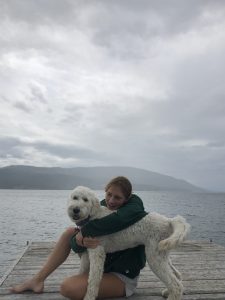
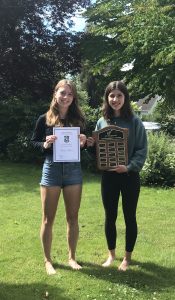 Although Anna is quick to point out that there are many teachers who have had a positive influence on her during her time at Oak Bay, she particularly enjoyed taking history with Scott Alexander because of his interest in encouraging in class discussions about the course material and current events. Outside of school, Anna cites her parents and the Graham family as positive influences and role models in her life.
Although Anna is quick to point out that there are many teachers who have had a positive influence on her during her time at Oak Bay, she particularly enjoyed taking history with Scott Alexander because of his interest in encouraging in class discussions about the course material and current events. Outside of school, Anna cites her parents and the Graham family as positive influences and role models in her life.
With university fast approaching, Anna is looking to enter a discipline which combines her interests in science and fine arts such as architecture. Based on her strong track record of success so far, we have no doubt that Anna will excel in whatever program she ultimately chooses and look forward to hearing about her future accomplishments.

